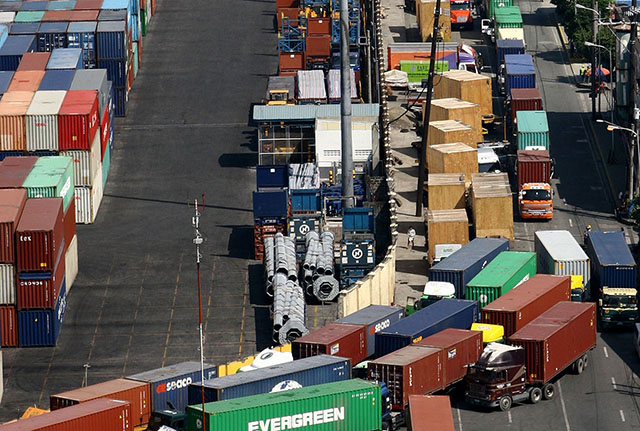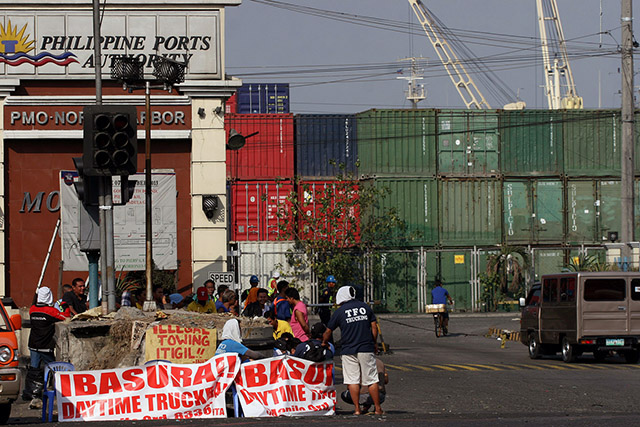Filtered By: Money
Money
Manila ports already congested even before truck ban – economists
By DANESSA O. RIVERA, GMA News
The sea ports congestion in Manila started way before the city government imposed the daytime truck ban that actually served as an eye opener for the problem at hand, economists interviewed by GMA News Online said.
If the port congestion started just when the daytime truck ban was implemented, then the issue could have been easily resolved by lifting the prohibition, Ateneo de Manila University Economics professor Alvin Ang told GMA News Online.
"Ang tanong diyan: Noong inimplement ang stringent truck ban lang ba nagkaroon ng port congestion o baka dati pa?" he said.
"The truck ban could be an eye opener... Hindi naman bigla na lang magkakaroon ng port congestion," he added.
Last February, Manila Mayor Joseph Estrada announced a prohibition banning cargo trucks from the city's main roads from 5 a.m. to 9 p.m., a move that supposedly created a backlog in deliveries to, through and from the Port of Manila.
Last week, the Philippine Ports Authority PPA blamed the Manila truck ban as the root cause of the congestion problem in the Port Area west of the city.

A contributing factor

A contributing factor
The ban definitely is a contributing factor to the ports problem, lending additional constraints in the transport of goods, but it is not the main reason, University of Asia and the Pacific (UA&P) School of Economics dean Peter Lee U said in a separate phone interview.
There is a big difference between allowing cargo trucks and vans to ply the streets of the city the whole day and limiting the deliveries at night, the economist said. "If you limit the number of trucks in Manila, it will be harder to move out goods as fast as before," U said.
"There will be a choke point where more shipments are coming in the ports but less coming out," he noted.
Easier said than done, but government should fast-track the decongestion of Manila ports or this will have a bigger impact on the Philippine economy in general, the economists said.
There's a "what-could-have-been" scenario with the port congestion, U said. "We could have had higher GDP if not for the forgone production," he said.
If the problem will persist, we may see a slowdown in output in the second quarter, he added.
In the first quarter, the GDP expanded by 5.7 percent from 7.7 percent a year earlier as the economy reeled from the impact of Typhoon Yolanda.

Higher costs

Higher costs
Since what passes through the ports are tradable goods, the cost of doing business and cost of living will be higher [with the congestion factored in], Ateneo's Ang said. "Lumalaki ang opportunity costs and this means higher prices of goods."
This was reflected in July when inflation rose by 4.9 percent, its fastest in nearly three years, as food prices spiked and the cost of utilities contributed to overall price increases for the month.
The July data brought the year-to-date average to 4.3 percent or at the upper end of the government target of 3 to 5 percent.
Once the Manila ports are decongested, Ang said government should work on linking North and South Luzon to Manila through connector roads for faster travel.
Even if the Ports of Subic and Batangas may be willing bear some the brunt of congestion from the ports in Manila, the idea may not be feasible due to logistics since the majority of businesses are located in Metro Manila.
Even if the Ports of Subic and Batangas may be willing bear some the brunt of congestion from the ports in Manila, the idea may not be feasible due to logistics since the majority of businesses are located in Metro Manila.
"More incentives should also be given to transfer businesses and logistics companies to set up shop in Subic and Batangas," he added. – VS, GMA News
More Videos
Most Popular



